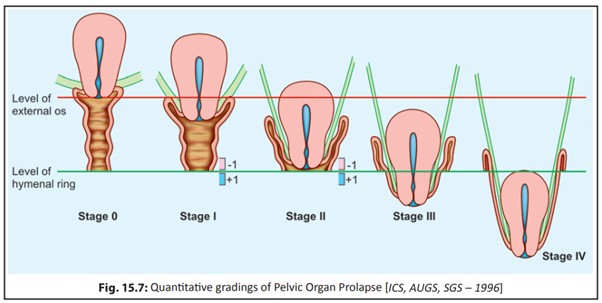What is Pelvic Organ Prolapse?
Click here for an infographic version
Our pelvic organs are supported by the pelvic floor muscles which is located at the base of your pelvic area. It supports our bladder, uterus, and bowel. A prolapse happens when the pelvic floor muscles is no longer able to support and hold these organs in place because it may have been weakened or damaged. This causes the pelvic organs to prolapse whereby the organ will drop out of the vagina.
Types of pelvic organ prolapse:
1) Bladder Prolapse – the most common type of prolapse whereby the bladder drops out of the vagina.
2) Uterine Prolapse (‘rahim jatuh’) – the uterus bulges into or out of the vagina.
3) Rectal Prolapse – the rectum bulges into or out of the vagina.

Women usually will notice the feeling of a bulge in the vagina. Other symptoms of pelvic organs prolapse include:
- A feeling or seeing that something is falling out of the vagina
- Painful intercourse
- A feeling of pressure or discomfort in the pelvis
- Bladder control problems such as leaking or urine urge
- Constipation
Early signs of prolapse are mild and difficult to detect. When you find yourself having any of the above, it may often be somewhat severe and the treatment options may be limited to surgical intervention. Some women develop more than one pelvic floor disorder, such as pelvic organ prolapse with urinary incontinence.
What Causes Pelvic Organ Prolapse?
The common causes include:
- Pregnancy, labor, and childbirth (the most common causes)
- Long-term coughing, sneezing
- Menopause (hormones affect muscle support)
- Constipation
- Pelvic organ cancers (added weight)
- Obesity
- Surgical removal of the uterus (hysterectomy)
How is Pelvic Organ Prolapse Diagnosed?
Late-stage prolapse typically does not require professional diagnosis as it is visible at the entrance of the vagina or outside of the vagina.
Whereas early stage prolapse is slowly happening inside of our body and therefore require a pelvic examination for effective and timely intervention.
At Vibrance, we offer Female Prolapse Screening to check your pelvic floor muscle conditions and also sign of pelvic organ prolapse. Performed by experienced Women’s Health Physiotherapists, they will consult with your symptoms and perform a physical pelvic examination to determine.
How is Pelvic Organ Prolapse Treated?
There are a few options for treating pelvic organ prolapse. It is highly dependent on the stage of your prolapse.

Pelvic floor muscle rehabilitation is usually recommended to help strengthen your support of the pelvic organs.
For more severe cases, you may be recommended a pessary ring or surgery to support the pelvic organs, on top of pelvic floor rehabilitation to manage the condition and prevent worsening of prolapse that can cause severe negative impact to your quality of life.
Seek Treatment in Malaysia
If you think you may experience any of the above, kindly contact our Women Health’s Physiotherapist to check your pelvic condition and help you rehabilitate and strengthen your Pelvic Floor Muscles.
The treatments we offer are non-surgical solutions that use clinically proven methods that involve physical therapy and the use of medical devices. It means that the treatment is safe and is proven effective in giving LASTING, TANGIBLE RESULTS (unlike potentially risky aesthetics treatments such as laser, needle jabs, and others).
Prolapse can be entirely prevented with early intervention. Start with a prolapse checkup today by clicking the button below.
References
Pelvic organ prolapse. Retrieved from https://www.webmd.com/urinary-incontinence-oab/pelvic-organ-prolapse#2
Pelvic organ prolapse. Retrieved from https://www.womenshealth.gov/a-z-topics/pelvic-organ-prolapse
